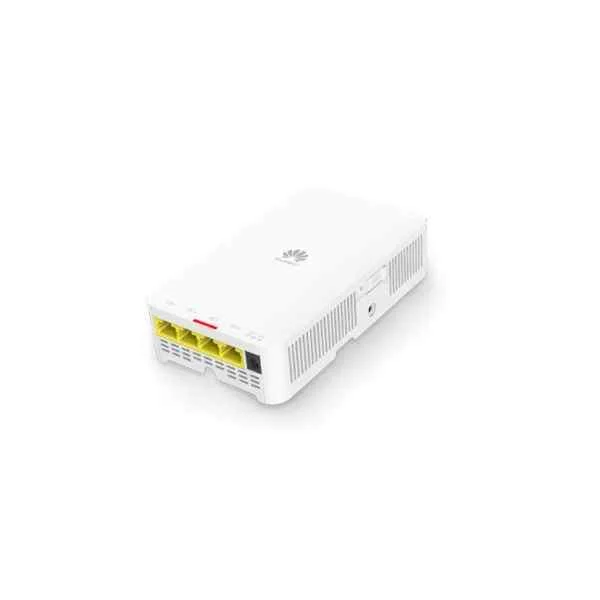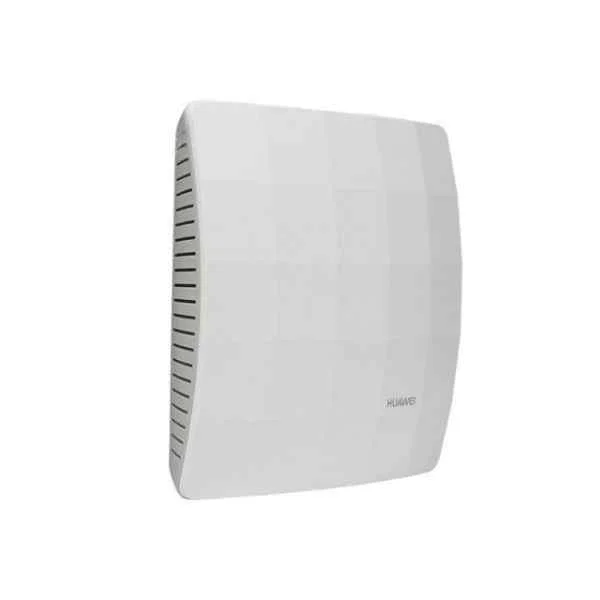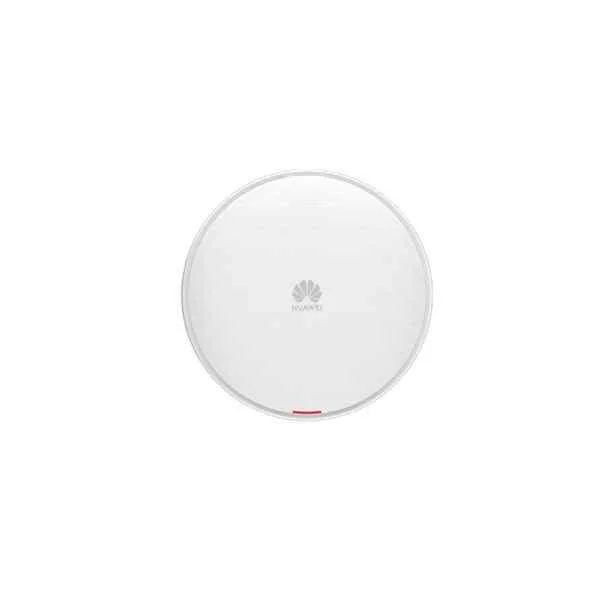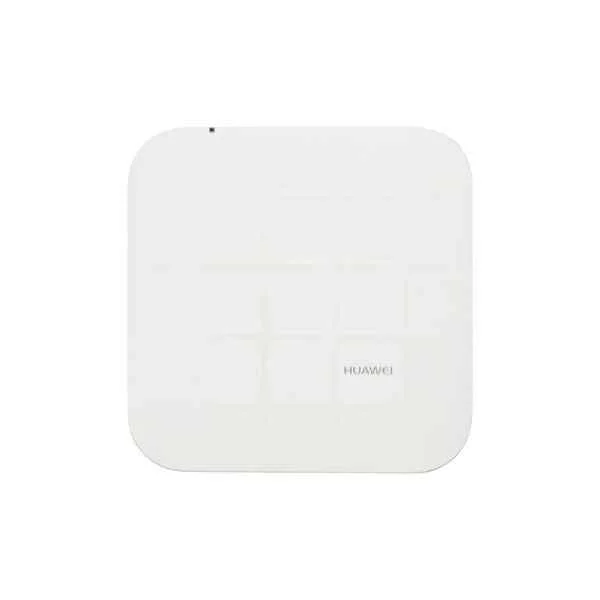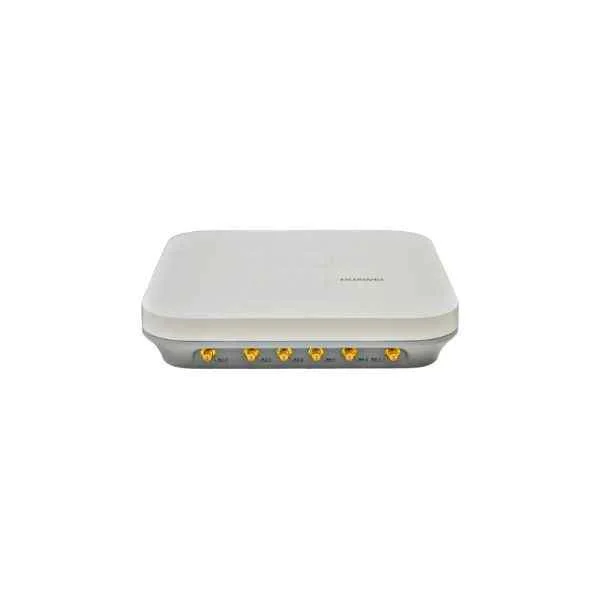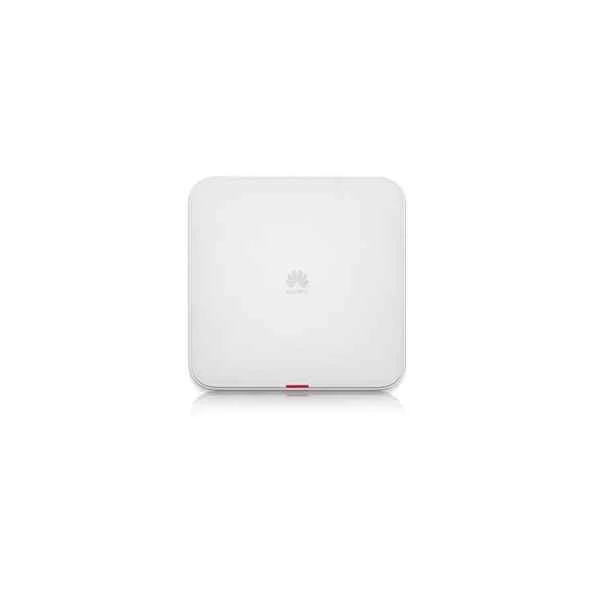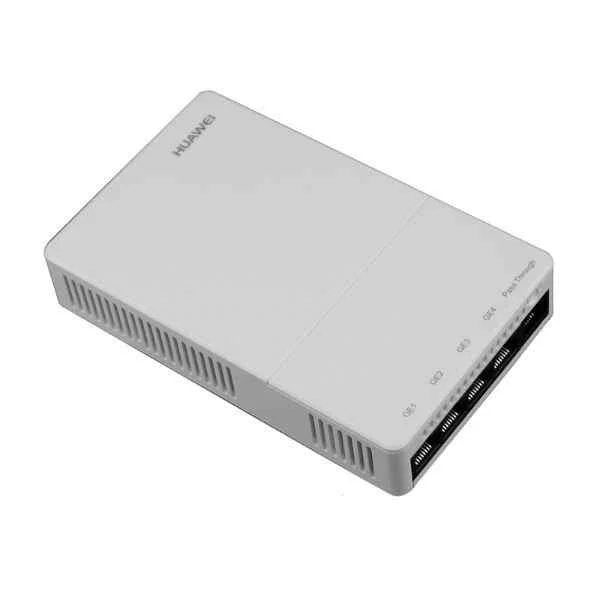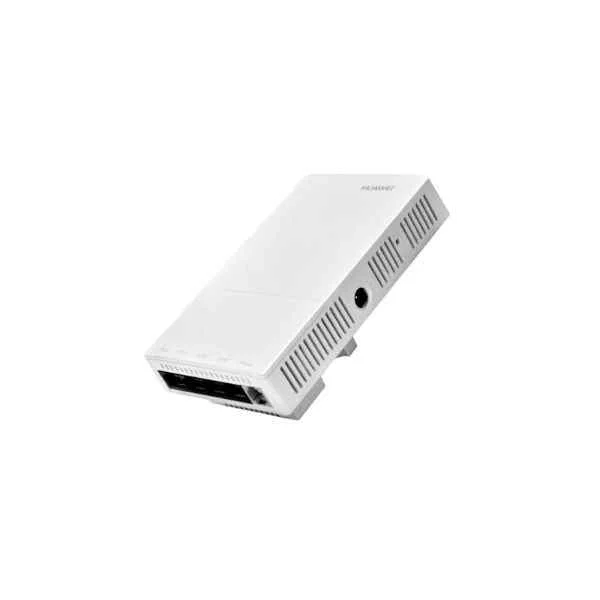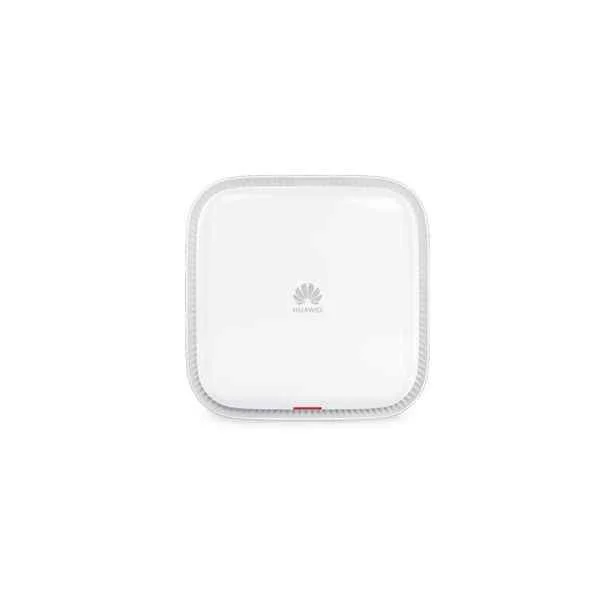Overview Of AP5510-W-GP
No Data FoundSpecification Of AP5510-W-GP
AP5510-W-GP Datasheet
AP5510-W-GP Specification
AP5510-W-GPÂ Specification |
|
|
Dimensions (H x W x D) |
86mm x 150mm x 38.5mm |
|
Weight |
0.3kg |
|
Interface type |
Uplink: 1 x GPON Downlink: 4 x GE |
|
LED indicator |
Indicates the power-on, startup, running, alarm, and fault states of the system. |
|
Power input |
DC: 12 V ± 5% |
|
Maximum power consumption  |
14.2 W NOTE The actual maximum power consumption depends on local laws and regulations. |
|
Operating temperature |
–10°C to +50°C |
|
Storage temperature |
–40°C to +70°C |
|
Operating humidity |
5% to 95% (non-condensing) |
|
Dustproof and waterproof grade |
IP41 |
|
Altitude |
–60 m to +5000 m |
|
Atmospheric pressure |
53 kPa to 106 kPa |
|
Antenna type |
Built-in dual-band smart antenna |
|
Antenna gain |
2.4G: 3 dBi 5G: 4 dBi |
|
Maximum number of SSIDs for each radio |
≤ 16 |
|
Maximum number of users  |
≤256 NOTE The actual number of users varies according to the environment. |
|
Maximum transmit power  |
2.4G: 23 dBm (combined power) 5G: 23 dBm (combined power) NOTE The actual transmit power depends on local laws and regulations. |
|
Power increment |
1 dBm |
|
Maximum number of non-overlapping channels  |
2.4 GHz(2.412GHz~2.472GHz) l • 802.11b/g − 20MHz:3 l • 802.11n − 20MHz:3 5 GHz(5.18GHz~5.825GHz) l • 802.11a − 20MHz:13 • 802.11n − 20MHz:13 − 40MHz:6 l • 802.11ac − 20MHz:13 − 40MHz:6 − 80MHz:3 NOTE The table uses the number of non-overlapping channels supported by China as an example. The number of non-overlapping channels varies in different countries. For details, see the Country Codes & Channels Compliance. |
|
Receiver sensitivity (Typical values) |
• 2.4 GHz 802.11b: -99 dBm @ 1 Mbit/s -91 dBm @ 11 Mbit/s • 2.4 GHz 802.11g: -93 dBm @ 6 Mbit/s -78 dBm @ 54 Mbit/s • 2.4 GHz 802.11n (HT20): -93 dBm @ MCS0 -72 dBm @ MCS15 • 5 GHz 802.11a: -93 dBm @ 6 Mbit/s -77 dBm @ 54 Mbit/s • 5 GHz 802.11n (HT20): -92 dBm @ MCS0 -72 dBm @ MCS15 • 5 GHz 802.11n (HT40): -89 dBm @ MCS0 -70 dBm @ MCS15 • 5 GHz 802.11ac (VHT20): -92 dBm @ MCS0NSS1 -71 dBm @ MCS8NSS2 • 5 GHz 802.11ac (VHT40): -90 dBm @ MCS0NSS1 -63 dBm @ MCS9NSS2 • 5 GHz 802.11ac (VHT80): -86 dBm @ MCS0NSS1 -60 dBm @ MCS9NSS2 |
|
Safety standards |
• UL 60950-1 l • CAN/CSA 22.2 No.60950-1 l • IEC 60950-1 l • EN 60950-1 l • GB 4943 |
|
Radio standards |
• ETSI EN 300 328 • ETSI EN 301 893 • China's SRRC document [2002] No. 353 • China's SRRC document [2002] No. 277 • China's SRRC document [2012] No. 620 • FCC Part 15C: 15.247 • FCC Part 15C: 15.407 • RSS-210 • AS/NZS 4268 |
|
EMC standards |
• EN 301 489-1 l • EN 301 489-17 • ETSI EN 60601-1-2 l • FCC Part 15 • ICES-003 • YD/T 1312.2-2004 • ITU k.20 • GB 9254 • GB 17625.1 • AS/NZS CISPR22 • EN 55022 • EN 55024 • CISPR 22 • CISPR 24 • IEC61000-4-6 l • IEC61000-4-2 |
|
IEEE standards |
• IEEE 802.11a/b/g • IEEE 802.11n • IEEE 802.11ac • IEEE 802.11h • IEEE 802.11d • IEEE 802.11e • IEEE 802.11k • IEEE 802.11u • IEEE 802.11v • IEEE 802.11w • IEEE 802.11r |
|
Security |
• 802.11i, Wi-Fi Protected Access 2(WPA2), WPA • 802.1X • Advanced Encryption Standards(AES), Temporal Key Integrity Protocol(TKIP) • EAP Type(s) |
|
EMF |
• CENELEC EN 62311 • CENELEC EN 50385 • OET65 • RSS-102 • FCC Part1&2 • FCC KDB series |
|
RoHS |
Directive 2002/95/EC & 2011/65/EU |
|
Reach |
Regulation 1907/2006/EC |
|
WEEE |
Directive 2002/96/EC & 2012/19/EU |


 +1 (281) 747-5957
+1 (281) 747-5957





